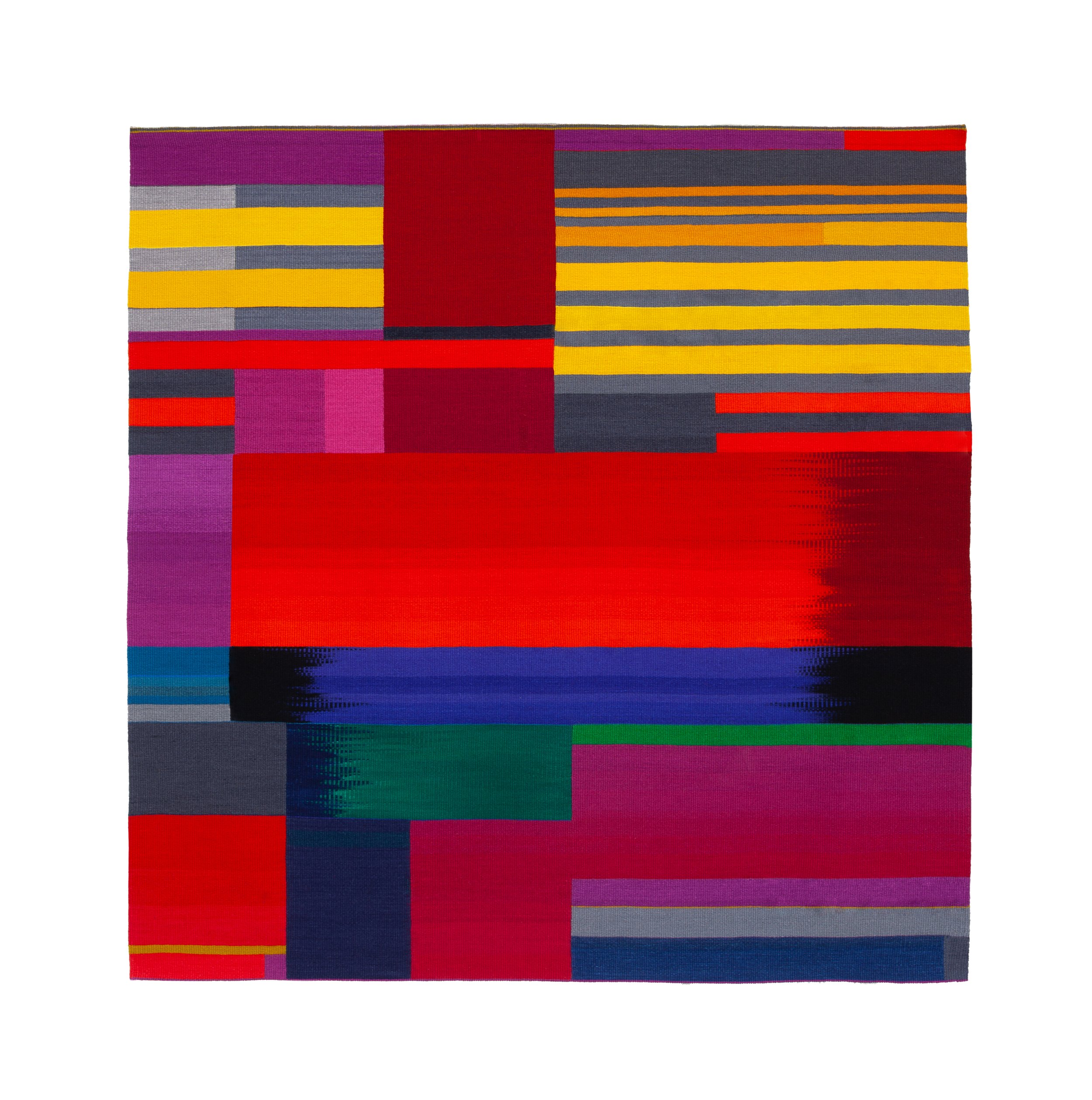Mary Zicafoose
Michigan born, Mary Zicafoose received her BFA from St. Mary’s College, the sister school to the University of Notre Dame. Graduate studies include the School of the Art Institute of Chicago and the University of Nebraska.
As a young artist, seeking to make work in cloth more painterly, she explored the complex and relatively obscure resist dye technique of Ikat. Three decades later, she remains joined-at-the-hip with this textile process. Over the years, her work in cloth has expanded into series of collographic monoprints, editions of framed works on paper that mirror the lyrical flow of dye and saturation of color of her ikat textiles.
Zicafoose is Co-director Emeritus of the American Tapestry Alliance, and formerly served on the board of Goodweave, an NGO dedicated to eliminating child labor in Southeast Asian rug factories. Her work is exhibited and collected internationally, included in the collections of sixteen United States Embassies on four continents. For the last decade, her studio practice has been focused on creating large-scale tapestry installations for public buildings. Her most recent contribution to the textile field is the Penguin/Random House book, Ikat: The Essential Handbook to Weaving Resist-Dyed Cloth, released in fall 2020.
Artist Statement
I am a tapestry weaver. Using massive room-sized looms and intricately dyed threads I use age-old textile processes to tell contemporary stories in woven cloth.
I am currently working between two tapestry series, Faultlines, a family of pieces that grapple with climate shifts and earth changes, seen and unseen, experienced and projected; and the Field Guide series, tapestries and works on paper inspired by the dramatic and constantly changing visual topography of place. The landscape of the Great Plains has been the template of my work for the last three years, specifically inspired by Pahuk, our family property on the Platte River in rural eastern Nebraska.
I have a lifelong fascination with the metaphysics of archetypal symbols and have used them extensively in my work over the years, designing series of tapestries around specific symbols, each piece deeply color saturated and technically layered, using the complex resist-dye process known as ikat. A lifetime of experimentation and studio practice with ikat has given me the masterful range and facility of a painter’s hand expressed at the loom. My blending of the classic with the innovative results in textiles that span centuries of artistic tradition situating them squarely within the contemporary visual lexicon.
Educated in fine art, my formative years as an artist were spent as a rug weaver. Over time and demand the rugs began to evolve and migrate off the floor, up the wall. The scope of my art making has exponentially grown in the last two decades, in response to the opportunity to create large-scale architectural tapestry installations for public buildings. Both I, and my work, are at their best when given a grand scale to engage an audience. These textiles are designed to inspire and enhance individual’s experiences of art, architecture, and design, and in the grandest sense, engage human spirit, as well.
At Tusen Takk
I am coming to Tusen Takk to step away from my looms and dyepots. I am literally seeking refuge, to get out of context of my studio practice, and give form to my storytelling with a different hand, in a different way.
My residency mission is to begin work in two very different areas of current interest:
Create wall pieces constructing and collaging painted and natural wood scraps.
Create wall pieces constructed by sewing and piecing ethnic textiles on canvas, embellished with hand sewing, dyes, markings, and paint.





Related News


